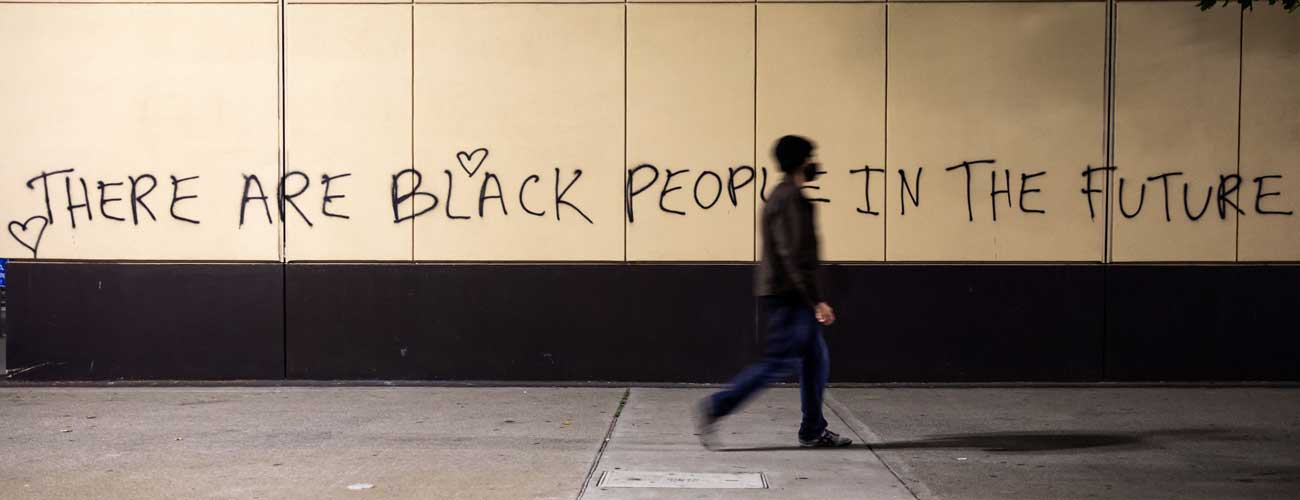The Role of Design in Social Justice
The language we use in design and development often has an overemphasis on “forward thinking”. The idea of restorative justice or communal healing is too often overshadowed by this impulse for progress (read: newer, more expensive, and bigger).
And what has that gotten us?? Urban Renewal, Eminent Domain, segregationist housing programs, Redlining, Gentrification, “Broken Windows” Policing (just to name a few), and of course the state sanctioned violence that protects property over people!
It is disingenuous to talk about investment and disinvestment as inevitabilities of an agnostic economy when our economy is informed by the decisions, priorities and biases of PEOPLE.
The parallels between the gentrification/displacement and colonization are glaring. To try to explain away the same impulses that decimated indigenous populations worldwide and attempted (and still attempts) to justify chattel slavery and other atrocities in the name of “progress”—is in fact the opposite—it is a backwards denial of the truth.
Many communities have been damaged and continued to feel damage in the name of progress so often that it has morphed into a dirty word—when it shouldn’t be. But without reconsidering how we measure and fund progress, it will remain a tool for Anti-Black violence.
We must shift the narrative from places and things to Lives and Legacies.
The problem is designers can only touch on these subjects peripherally until we can embrace our role as social disruptors and dare I say it: activists. Currently we are too transactional. There should be more to our role than streetscape improvements and mixed use development, but that is often what we are relegated to because of the nature of our industry and more broadly our economic system.
It fails to interrogate the assumptions it makes about what makes it run, who is allowed to participate and how we determine who is allowed to participate. We must begin to ask, “For whom are we accountable to?”
The Racialized, Sexualized, Xenophobic and otherwise disproportionate allocation of poverty in this country has a direct effect on who becomes a client and can establish or influence the goals of a project.
Bare minimum (if ANY) legal protections for communities who don’t have the capital/capacity to proactively develop their own project but nonetheless are affected by corporate mega developments by investors who do not share in their social or economic legacies and realities. In MY social or economic legacy and reality.
My thoughts turn to the New Deal after our Country’s first big recession. Millions of dollars of public money was invested in the development of many of the institutional buildings, statues, public plazas, that we still enjoy today. In the Pittsburgh region, we saw institution building being led by local industry titans such as Carnegie, Heinz, and Forbes. While there is nothing wrong with the private sector supporting philanthropic initiatives, over reliance on these resources have resulted in the economic stagnation experienced in many of our legacy cities today.
And we cannot overlook how acts of placemaking in the name of progress have contributed to economic repression:
- The federal housing programs under the New Deal that excluded people of color from housing being built in the what we now call the suburbs
- The Federal Housing Administration’s practice of redlining that excluded people of color from insured mortgages
- The Crosstown Expressway that effectively cut off the Hill District neighborhood from Downtown, constructed in 1939
- The Eminent Domain policy that displaced over 8,000 families to build the Civic Arena, and failed to deliver on its promise for Black employment, 1961
Placemaking is more than creating opportunities for new development and business opportunities, because all of the initiatives listed above could say that they did that. It is no secret that there are certain segments of the population that have made many calls to be seen and represented in the planning and development of their community.
Designers for social justice must not only think of what could be in the future, we have a moral imperative to fully address design as a significant moment of reconciliation between the people of this community and the economic development and design disciplines.
Cities across the nation are still grappling with how to build up capacity to maintain urban infrastructure while income disparity in this country continues to grow. If our industry remains passive on the obsolete economic forces that pay for our services, placemaking will become that much more a symbol of elitism, imperialism and gentrification.
For some, the design and planning process is the easiest and perhaps the only entree into civic life and community pride. Designers for social justice will actively seek out more ways to elevate the public from passive critics into full-fledged design investors and collaborators.
Ashley Cox has been practicing as an urban designer with many diverse communities in Pennsylvania and beyond since joining evolve in 2014. She is an EcoDistricts Accredited Professional and a member of NOMA (National Organization of Minority Architects).


